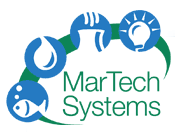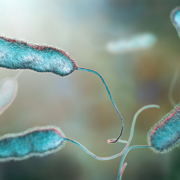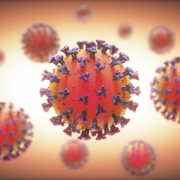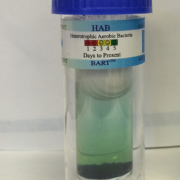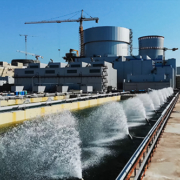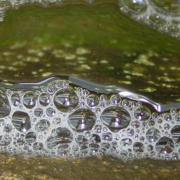Four things that you should know if you must test your cooling water for Legionella Bacteria, Part 2
This blogpost will review the fourth thing that you should know – how to choose one of the currently-commercialized laboratory and/or field tests for legionella bacteria. The previous blogpost reviewed the first three things that you should know if you must test your water for legionella bacteria.
Monitoring for Legionella pneumophila requires determining the optimal laboratory and/or field test methods.
The specific objective for measuring Legionella pneumophila in cooling water will determine the optimal laboratory and/or field test methods.
Culture Test – Traditional Spread Plate (ISO11731, CDC)
The traditional spread plate measures the population of live Legionella pneumophila bacteria (including individual serogroups) and is the CDC’s definitive method to assess the risk of Legionnaires’ Disease. The primary challenges of this method are that Legionella pneumophila bacteria are very slow growing, (7 days: preliminary; 14 days: final results) and the bacteria must reproduce in the absence of a host (amoeba, protozoa), a modality not found in nature. In addition, the test does not measure “viable but non-culture-able” Legionella pneumophila bacteria – i. e. legionella bacteria that simply do not “like” the agar media.
The test method allows laboratory technicians to use an acid or heat treatment to be able to eliminate an overgrowth of heterotrophic bacteria and “read” the results – a process that can destroy some of the legionella bacteria in addition to the HPC bacteria.
Owners of cooling towers must transport or mail water samples to a certified laboratory for analysis. The 7-to-10-day delay in test results, the risk of compromise of the sample during transport to the certified laboratory, and the “unnatural” test protocol makes the information provided by spread plate cultures unhelpful in controlling the risk of Legionellosis infections from cooling towers.
Culture Test – IDEXX Legiolert
Legiolert is a modified culture test that uses a bacterial enzyme detection technology to provides the concentration of viable cells as Most Probable Number (MPN) instead of colony-forming units (CFU).
The CDC does recognize this modified culture test as an alternative to the traditional spread plate method except for investigations of a known or suspected outbreak. For non-potable waters, the sensitivity limit in this test method is 10 CFU/mL of legionella; this technology does not provide any information about serogroups. Results of a recent study published in AWT’s trade journal show that this technology detects Legionella pneumophila with equal or greater accuracy and faster (7 days) than traditional spread plate culture methods in water samples from cooling towers.1
Owners of cooling towers must transport or mail water samples to a certified laboratory for analysis or have an in-house laboratory conduct the test. The 7-day delay in test results, and the risk of compromise of the sample during transport to the certified laboratory – or requirement to have an in-house, trained laboratory technician makes the information provided by IDEXX Legiolert cultures unhelpful in controlling the risk of Legionellosis infections from cooling towers.
Quantitative polymerase chain reaction (qPCR)
This is a rapid molecular test method that can detect and quantitate Legionella pneumophila and serogroup 1 in water samples by identifying an amplified gene sequence using a fluorescent signal. Results are semi-quantitative based on comparison to a standard curve of fluorescence of a known quantity of DNA of the target gene. Instead of colony-forming units, the results may be reported in Modified Fishman Units to account for bacteria that are viable but non-culturable.
Bacteria populations from the standard qPCR results are typically higher than culture because the standard qPCR assay cannot discriminate between of live and dead or impaired Legionella pneumophila and the test may detect Legionella pneumophila bacteria that are not culturable (NVBC). By using proprietary sample preparation procedures, the Viability-qPCR assay can differentiate between live and dead cells, providing a test result for live Legionella pneumophila but cannot measure non-culturable bacteria.
qPCR methods traditionally required a full-service microbiology laboratory. Three examples of portable qPCR devices suitable for use in a “field-laboratory” are iQ-Check® Legionella Real-Time PCR Kits from Bio-Rad (test results in 4 hours),2 Luminultra GeneCountTM (test results in 2 hours) and Spartan Cube (test results < 1 hour).3 GeneCountTM is able to analyze up to 14 samples with controls – simultaneously.
Results of a recent published study4 showed a concordance between the results from the on-site qPCR using the Spartan Cube and laboratory culture methods but showed poor correlation between the laboratory and on-site qPCR tests. The risks of compromising the water sample during shipping is real; on-site testing at a cooling tower with the Spartan unit showed high concentrations of Legionella pneumophila in a cooling tower that had “passed” the laboratory culture test.5
The field test kits will provide test results within several hours, making them very appropriate to control the risk of Legionellosis infections from cooling towers.
Lateral Flow Immunochromatographic Assay (LFICA)
Immunochromatographic assay uses the same technology as home pregnancy tests. Water samples must be filtered prior to testing. Antibodies of Legionella pneumophila serogroup 1 tagged with red nanoparticles, bind to any bacteria in the sample and make them visible as a thin line on the device. Hydrosense6 provides a test result after a 25-minute reaction period. The sensitivity of this test is 100 CFU/ml of legionella bacteria for water samples (standard kit) and 200 CFU/ml for sessile bacteria samples (swab kit). The test has limited value for owners of cooling towers to assess the risks of efficacy of the corrective actions because the test is not sufficiently sensitive to meet the CDC specification of less than or equal to 10 CFU/ml of legionella pneumophila bacteria.
Biophotonic Light Sensor
A consortium of European researchers funded by investors is developing POSEIDON,7 a plasmonic-based automated lab-on-chip sensor for the rapid in-situ detection of Legionella that uses biophotonic technology to detect Legionella bacteria in less than an hour. Tiny sensors allow the device to use the photonics technique of Surface Plasmon Resonance (SPR) to read information from a refracted laser beam, providing a fast, highly sensitive and inexpensive detection from a small sample without the need for ‘labelling’ – binding the bacterium to a protein to permit detection. This device matches the refracted energy to the electronic signature of a pre-programmed pathogen such as Legionella pneumophila bacterium, providing an unambiguous detection of the bacteria in situ.
This device is currently in development and is not commercially available.
Note: Reference in this site to any specific commercial product, process, or service, or the use of any trade, firm or corporation name is for the information and convenience of the reader, and does not constitute endorsement, recommendation, or favoring by MarTech Systems, Inc..
Are you worried about legionella in your cooling tower? Or in your building’s water systems? We’re here to help. Call us (609-896-4457) or send us an email (huchler@martechsystems.com).
P. S. Don’t forget to subscribe to our blog.
The Analyst: The Voice of the Water Treatment Industry: Association of Water Technologies, Spring 2019, [1] https://123.index.idexx.com/resource-library/water/water-reg-article17N.pdf
[2] https://www.bio-rad.com/en-us/product/iq-check-legionella-real-time-pcr-kits?ID=LS5I7MLPT
[3] https://environmental.spartanbio.com/
Journal of Water & Health, Volume 17, Issue 2, 1 April 2019, [4] https://iwaponline.com/jwh/article-lookup/doi/10.2166/wh.2019.252
[5] https://environmental.spartanbio.com/docs/norkem-case-study.pdf
